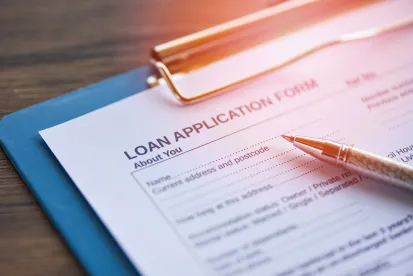Late last night, the SBA released two interim final rules related to the Second Draw PPP. The first interim final rule (the “First Rule”) reflects the changes to the PPP program instituted by the latest COVID-19 stimulus package, including additional allowed expenses and how to calculate the maximum PPP loan amount.
The second interim final rule (the “Second Rule”) clarifies the terms of the Second Draw PPP. These clarifications include specifics on the following:
Eligibility
-
Eligible Entities. An entity is eligible for a Second Draw PPP Loan only if:
-
It is a business concern, independent contractor, eligible self-employed individual, sole proprietor, nonprofit organization eligible for a First Draw PPP Loan, veterans organization, Tribal business concern, housing cooperative, small agricultural cooperative, eligible 501(c)(6) organization or destination marketing organization, or an eligible nonprofit news organization that:
-
Previously received a First Draw PPP loan;
-
Has used, or will use, the full amount of its First Draw PPP loan;
-
Employs not more than 300 employees, unless it satisfies the alternative criteria for businesses with a North American Industry Classification System (“NAICS”) code beginning with 72 and eligible news organizations with more than one physical location; and
-
Experienced a reduction in revenue of at least a 25% reduction in gross receipts in 2020 relative to 2019.
-
-
-
Size Test. The Second Rule clarifies that the alternative size test and small business test, which were available for the First Draw PPP, are not available for determining eligibility of the Second Draw PPP.
-
Calculation of Revenue Reduction.
-
A borrower that was in operation in all four quarters of 2019 is deemed to have experienced the required revenue reduction if it experienced a reduction in annual receipts of 25% or greater in 2020 compared to 2019 and the borrower submits copies of its annual tax forms substantiating the revenue decline. Such a borrower may also demonstrate the required revenue reduction by demonstrating a revenue reduction in at least one quarter of 2019 compared to 2020.
-
If a borrower was not in operation for all four quarters of 2019, then the borrower will analyze its revenue reduction only for those full quarters it was in operation in 2019.
-
Definition of Gross Receipts.
-
The definition of gross receipts is as defined in 13 CFR §121.104.
-
For an eligible nonprofit organization, a veterans organization, an eligible nonprofit news organization, an eligible 501(c)(6) organization, or eligible destination marketing organization, gross receipts means gross receipts within the meaning of section 6033 of the Internal Revenue Code of 1986.
-
-
First Draw Forgiveness. Forgiveness of a First Draw PPP is not included in a borrower’s gross receipts.
-
Gross Receipts of Affiliates. These are calculated as follows:
-
Gross receipts of a borrower with affiliates is calculated by adding the gross receipts of the business with the gross receipts of each affiliate.
-
If a borrower has acquired an affiliate or been acquired as an affiliate during 2020, gross receipts includes the receipts of the acquired or acquiring business. This aggregation applies for the entire period of measurement, not just the period after the affiliation arose. However, if a concern acquired a segregable division of another business concern during 2020, gross receipts do not include the receipts of the acquired division prior to the acquisition.
-
The gross receipts of a former affiliate are not included. This exclusion of gross receipts of such former affiliate applies during the entire period of measurement, rather than only for the period after which affiliation ceased. However, if a borrower sold a segregable division during 2020, the gross receipts will continue to include the receipts of the division that was sold.
-
-
-
Affiliation. The affiliation rules are the same, with only the below changes.
-
Waiver. The affiliation waiver for businesses with a NAICS code beginning with 72 applies to entities with a NAICS code beginning with 511110 or 5151 (or majority-owned or controlled by a business with those NAICS codes) if the entities employees 300 or fewer employees by location.
-
-
Unresolved Borrower. If the First Draw PPP is under review by the SBA for potential ineligibility of the borrower, then the borrower may not receive a Second Draw PPP until the SBA’s review is complete.
Maximum Loan Amount
-
Calculation. This amount is based on the calendar year 2020 or 2019. Second Draw PPP borrowers who are not self-employed, sole proprietorships, or independent contractors are also permitted to use the precise 1-year period before the date on which the loan is made to calculate payroll costs if they choose not to use 2019 or 2020. Note that the Second Rule provides specific calculations for seasonal borrowers, farmers, self-employed individuals, and partnerships.
-
Corporate Group. A single corporate group may not receive more than $4,000,000 of Second Draw PPP in the aggregate.
Application Form
-
The form will be SBA Form 2483-SD and is forthcoming.
See the First Rule here.
See the Second Rule here.





 />i
/>i

